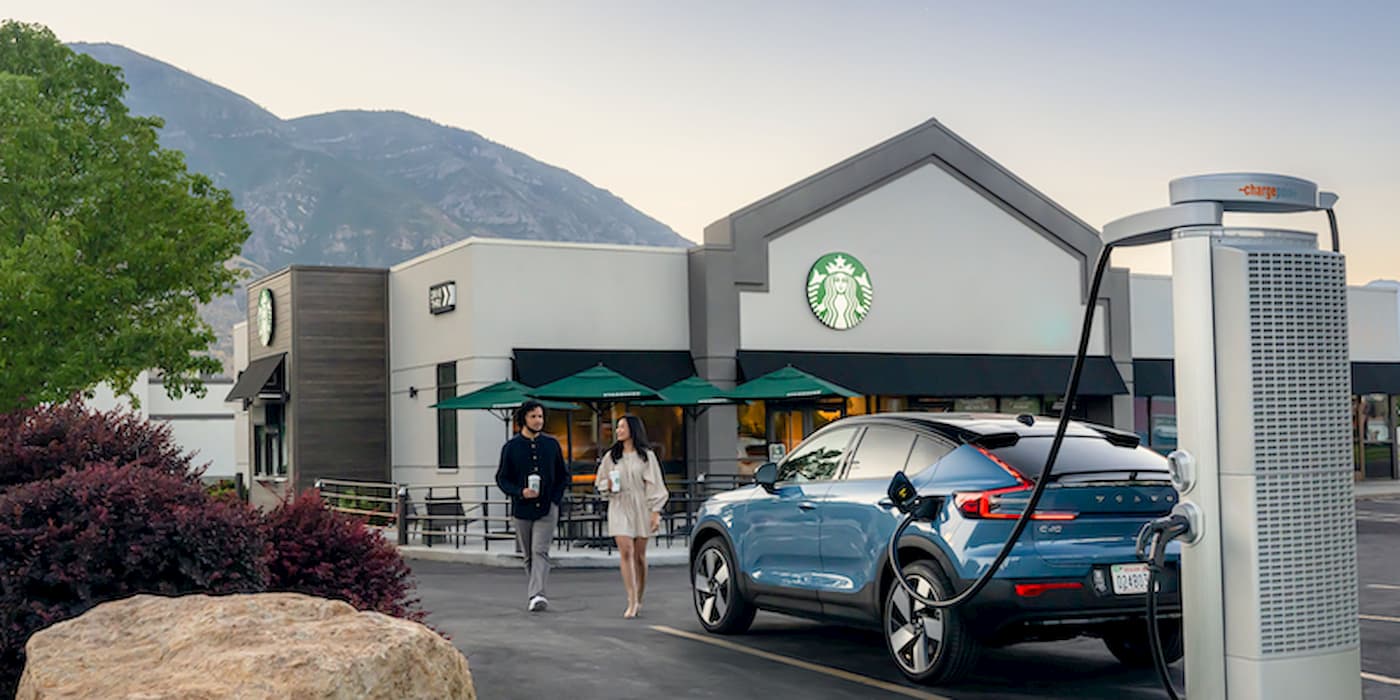You’re a business owner, constantly battling fluctuating customer traffic and razor-thin margins. You see the rise of electric vehicles, but is adding charging stations a real opportunity or just another headache?
The charging station and convenience store model is a mutually beneficial partnership, offering increased customer traffic and revenue for the store, and reduced infrastructure costs for the charging provider.
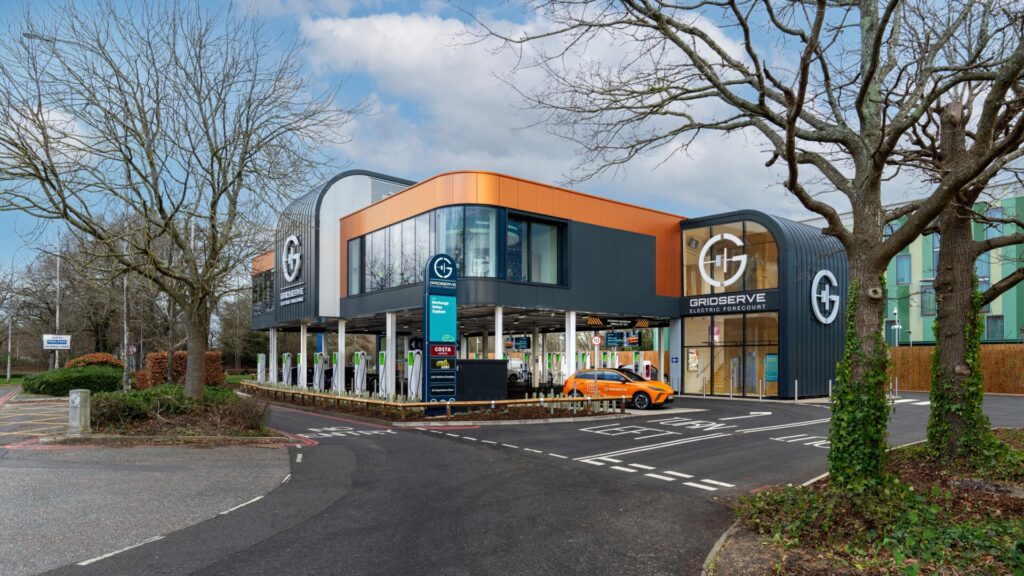
The electric vehicle (EV) revolution isn’t coming; it’s here. But it brings with it a unique opportunity. Combining these two businesses isn’t just about convenience; it’s about creating a powerful synergy. Let me walk you through it, based on my experience in the charging industry.
Location Determines Success: How Charging Stations and Convenience Stores “Heavenly Match”?
Location, location, location – it’s the mantra of retail, but how does it apply to this combined model? Is every convenience store suddenly a prime charging spot?
Strategic location is paramount. Highway-adjacent stores, those near major routes, and those serving areas with limited existing charging infrastructure are ideal matches.

- Highway/Travel Plazas: These are goldmines. Travelers need to stop, and extending that stop with a charge makes perfect sense. DC Fast Chargers (DCFC) are a must here.
- Urban Centers with Limited Home Charging: Apartment dwellers, condo residents – they often lack dedicated charging. A C-store with Level 2 or even slower DCFCs (50kW) can fill this gap.
- “Charging Deserts”: Areas with sparse charging infrastructure. Even a few chargers can become a destination.
| Location Type | Charger Type | Key Consideration |
| Highway/Travel Plaza | DCFC (150kW+) | High power, multiple ports, fast turnaround |
| Urban Center | Level 2, DCFC (50kW) | Convenience for residents, longer dwell time |
| “Charging Desert” | Any (prioritize DCFC) | Filling a gap, becoming a destination |
Remember my early days? We made the mistake of underestimating the power needs at a highway location. The upgrade costs nearly crippled the project. Lesson learned: future-proof from the start!
How “Charging + Shopping” Produces a Chemical Reaction of 1+1>2?
Okay, drivers need to charge, and people buy snacks. But does that really translate to a significant revenue boost? Is the synergy real?
The synergy is real and significant. EV drivers represent a predictable, often higher-income customer base, leading to increased foot traffic and sales for the convenience store.
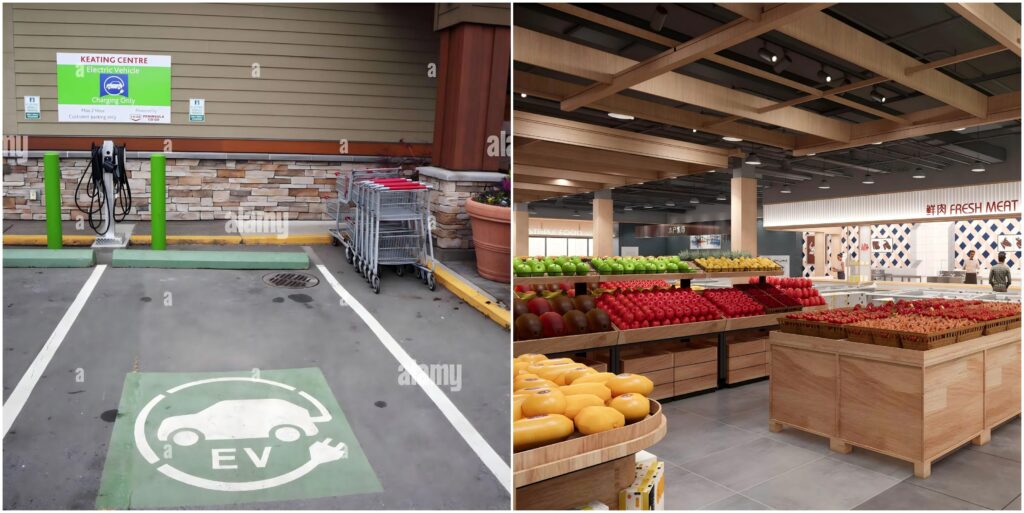
It’s more than just impulse buys.
- Predictable Revenue: C-stores often struggle with unpredictable customer flow. EV charging offers a more consistent stream, especially with strategic placement.
- Higher Disposable Income: Studies consistently show EV owners tend to have higher incomes. This translates to higher spending potential within the store.
- Dwell Time = Opportunity: Even fast charging takes time. That’s time spent inside your store, browsing, and, crucially, buying.
Breaking Down the Synergy:
- Increased Foot Traffic: More chargers, more cars, more potential customers walking through your door.
- Higher Sales per Visit: The “captive audience” effect, combined with a higher-income demographic, often leads to larger purchases.
- Brand Loyalty: A positive charging experience creates loyalty not just to the charging network, but also to your store.
Don’t just offer the basics. Think about curated product selections catering to this demographic – healthier snacks, premium coffee, tech accessories.
How to Price Charging Services to Achieve a Win-Win Situation?
Pricing power is always a delicate balance. How do you maximize charging revenue without driving customers away, especially with potentially high electricity costs?
A tiered pricing strategy, based on power level (kW) and charging time, is crucial. Dynamic pricing, adjusting rates based on demand, can further optimize revenue.

Think beyond a simple flat rate.
- Tiered Pricing: Faster charging (higher kW) should command a premium. Customers pay for speed and convenience.
- Dynamic Pricing: Just like airlines, adjust prices based on demand. Higher prices during peak hours, lower prices during off-peak times.
- Membership Models: Offer discounts to frequent users. Loyalty programs create recurring revenue and incentivize repeat visits.
- Integration with C-Store Loyalty: “Charge your car, get a free coffee.” This cross-promotion is incredibly powerful.
Pricing Considerations:
| Pricing Factor | Strategy | Benefit |
| Power Level (kW) | Higher kW = Higher Price | Customers pay for speed |
| Time of Day | Dynamic pricing (peak/off-peak) | Maximize revenue, manage grid load |
| Membership/Loyalty | Discounted rates for members | Recurring revenue, customer retention |
| C-Store Integration | Bundled offers (charge + purchase discount) | Increased in-store spending, loyalty |
Don’t just undercut the competition. Focus on value. Speed, reliability, and a great overall experience justify a premium.
Operational Difficulties and Solutions of Charging Station + Convenience Store Model?
This all sounds great in theory, but what about the real-world challenges? What are the common pitfalls, and how do you avoid them?
The main difficulties include ensuring sufficient power supply, managing installation costs, handling maintenance, and staying ahead of the competition.

- Power Availability: This is the biggest hurdle. Insufficient power supply can limit the number and power of chargers you can install. Solution: Early and thorough site assessments, and direct negotiation with the utility company, are critical.
- Installation Costs: DCFC installation is expensive. Solution: Explore government incentives, grants, and tax credits. Partnering with a charging network provider can also share the financial burden.
- Maintenance: Chargers need regular upkeep. Solution: Choose a reliable charging network partner with a proven track record of uptime and responsive service.
- Competition: The market is growing rapidly. Solution: Differentiate yourself. Offer a superior customer experience, strategic location, and a compelling value proposition.
Practical Solutions:
| Difficulty | Solution |
| Power Supply | Early site assessment, utility company negotiation |
| Installation Costs | Explore incentives, grants, partnerships |
| Maintenance | Choose a reliable charging network partner, proactive maintenance schedule |
| Competition | Differentiate (experience, location, value), strategic pricing |
Remember that one time we partnered with a C-store chain, but didn’t fully account for payment processing fees? It ate into our margins significantly. Negotiate those rates upfront!
How to Leverage Government Subsidies and Policy Bonuses?
Problem: Everyone talks about government support for EVs, but how do you actually tap into it? Are there specific programs to help with this combined model?
Answer: Governments at all levels offer various incentives, including tax credits, grants, and rebates, to support EV charging infrastructure development.
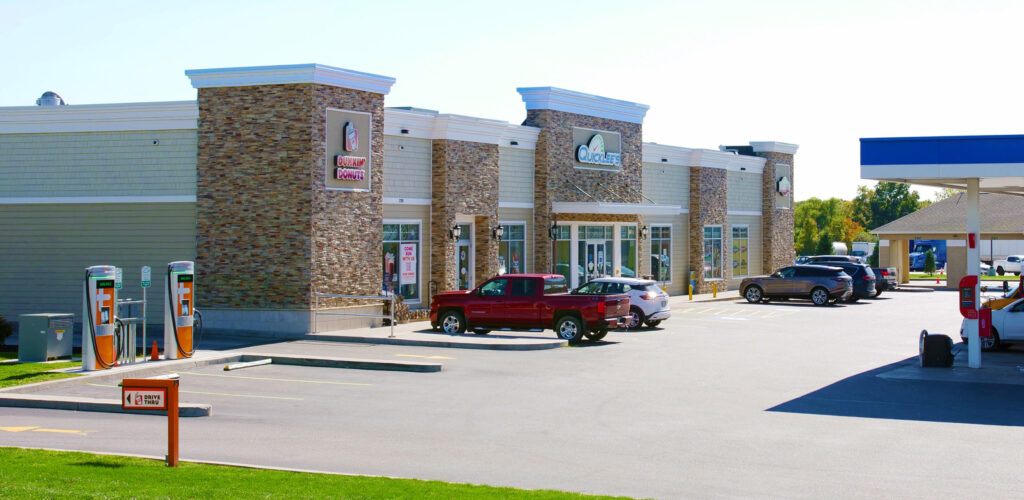
Dive Deeper:
Don’t leave money on the table.
- Tax Credits: Often available for a percentage of the installation cost.
- Grants: Competitive, but can provide significant funding, especially for projects in underserved areas.
- Rebates: Offered by some utilities and local governments.
- NEVI Funding (US Specific): The National Electric Vehicle Infrastructure program provides substantial funding, but has specific requirements (e.g., four 150kW DCFCs).
Key Steps:
- Research: Identify programs at the federal, state, and local levels.
- Eligibility: Understand the requirements for each program.
- Application: Prepare a strong application highlighting the project’s benefits.
- Compliance: Ensure you meet all program requirements to receive funding.
Be Persistent. The process can be complex, but the financial benefits are substantial.
Future Outlook: Evolutionary Direction of Charging Station + Convenience Store Model?
Technology changes fast. What does the future hold for this model? Will it remain relevant as EVs evolve?
The future involves smarter integration, the use of renewable energy, and potential expansion through shared economy models.
This isn’t a static industry.
- Smart Integration: Charging stations will become more integrated with the grid, optimizing energy usage and potentially even participating in vehicle-to-grid (V2G) programs.
- Renewable Energy: Expect more solar canopies and on-site energy storage, reducing reliance on the grid and lowering operating costs.
- The Sharing Economy: Shared charging networks and platform-based models could reduce investment costs and risks.
- Autonomous Vehicles: While further out, the eventual rise of autonomous vehicles will create new opportunities and challenges for charging infrastructure.
Key Trends
- Wireless Charging: While still developing, it could revolutionize the charging experience.
- Ultra-Fast Charging: 350kW and beyond will become more common, reducing charging times dramatically.
- Data Analytics: Sophisticated data analysis will optimize pricing, operations, and the overall customer experience.
Stay informed. The EV landscape is constantly evolving, and adapting to these changes will be key to long-term success.
How Charging Stations and Convenience Stores Share Benefits?
How is the revenue typically split between the charging station operator and the convenience store owner? What are the common partnership models?
Revenue sharing models vary, but common approaches include the charging provider paying rent to the store owner, a profit-sharing agreement, or the store owner purchasing and operating the chargers themselves.
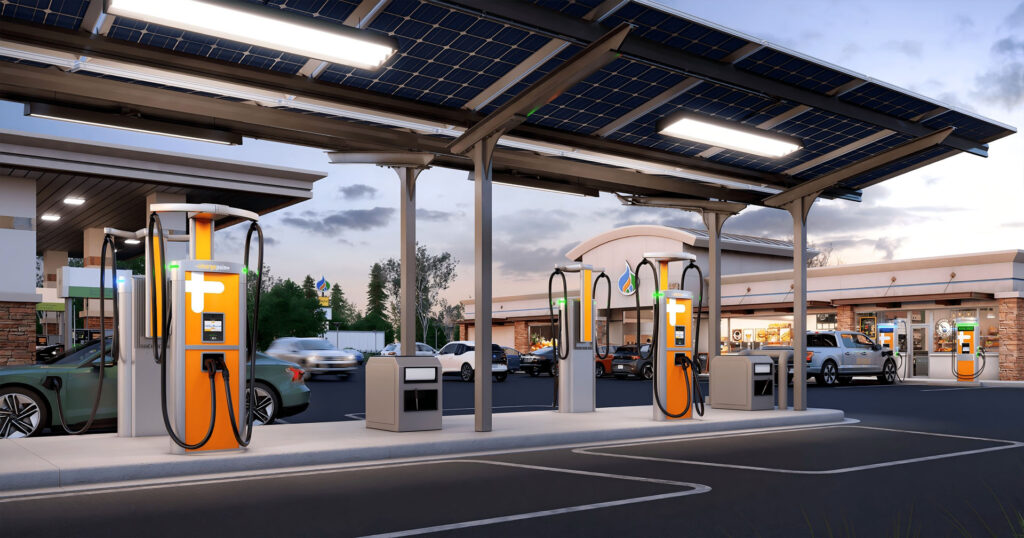
There’s no one-size-fits-all solution.
- Lease Agreement: The charging provider pays rent for the space, and keeps the charging revenue. The C-store benefits from increased foot traffic.
- Profit Sharing: The charging provider and C-store owner agree on a percentage split of the charging revenue.
- C-Store Ownership: The store owner purchases and operates the chargers, keeping all charging revenue, but also bearing all costs.
- Hybrid models: These can combine elements of various approachs.
Choosing a Model:
| Model | Pros for C-Store | Cons for C-Store |
| Lease | Guaranteed income, minimal risk | Lower potential revenue |
| Profit Sharing | Higher potential revenue, shared risk | Revenue fluctuations, shared control |
| Ownership | Highest potential revenue, full control | Highest risk, significant upfront investment |
The best model depends on the specific circumstances, risk tolerance, and investment capabilities of both parties. Transparency and a clearly defined agreement are essential.
Conclusion
The charging station + convenience store model is a powerful, mutually beneficial partnership. It’s not just about adding chargers; it’s about creating a destination that caters to the growing needs of the EV revolution. By understanding the nuances, addressing the challenges, and embracing innovation, this model offers a significant opportunity for long-term growth and profitability.
With TX’s custom product solutions, charging station operators can achieve lower upfront costs while securing top-tier charging products, all while delivering the most convenient and comfortable charging experience for EV drivers.

